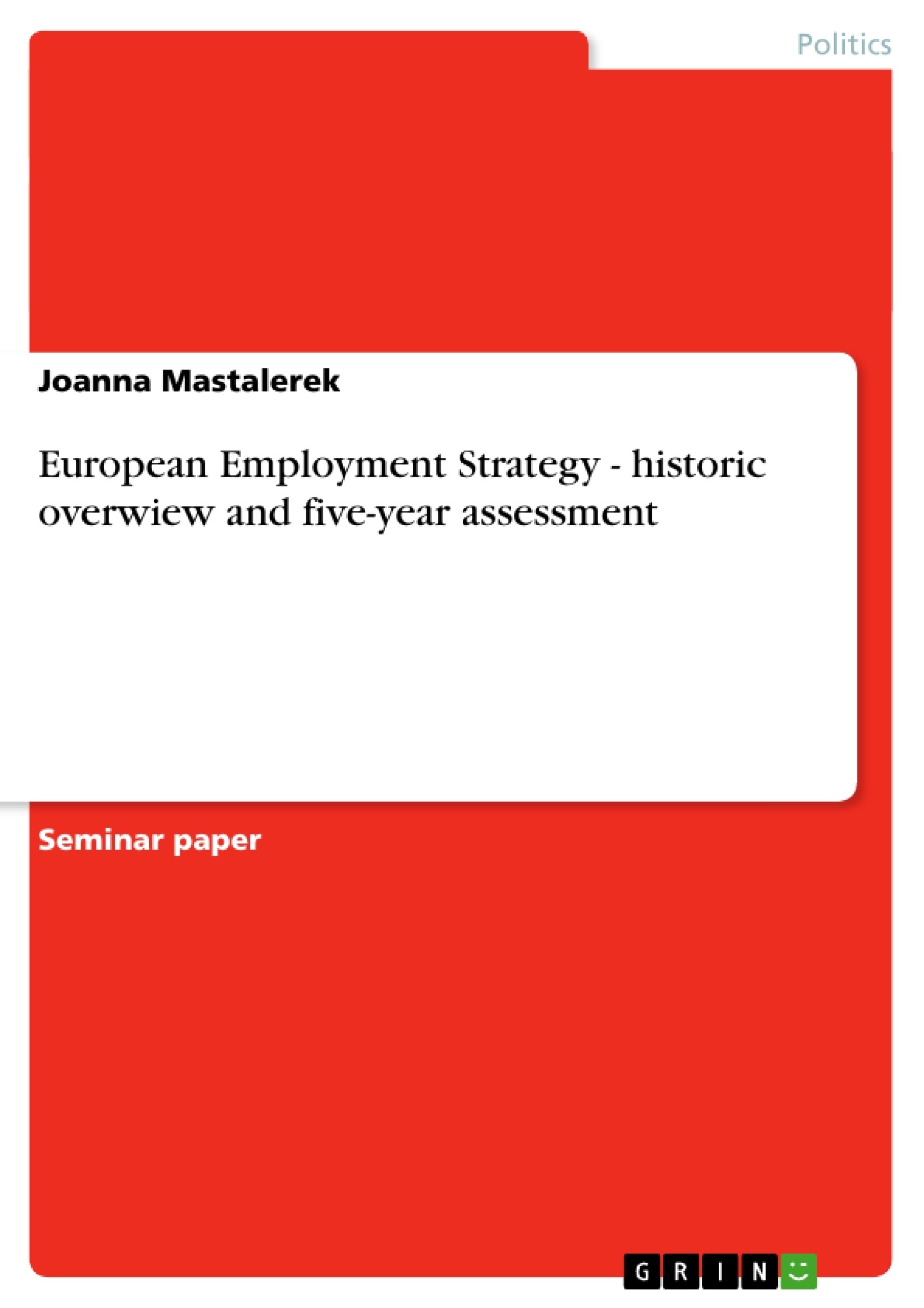This paper seeks to provide an introduction of the European Employment Strategy (EES), its role in the European Union, with a special focus on assessing the EES after five years being in practice. A short historical overview will be followed by an assessment of the strenghts and weaknesses of the EES. Finally the open method of coordination (OMC) as a key feature of the EES will be discussed concerning its strengths and weaknesses.
Inhaltsverzeichnis (Table of Contents)
- Introduction
- Historical overview
- The origins of the EES
- The advanced EES
- Strengths and weaknesses of the European Employment Strategy
- Strengths and weaknesses of the Open Method of Co-operation
- Conclusion
Zielsetzung und Themenschwerpunkte (Objectives and Key Themes)
This paper provides an introduction to the European Employment Strategy (EES), its role in the European Union, with a special focus on assessing the EES after five years being in practice. It will then move on to evaluate the strengths and weaknesses of the EES and the open method of coordination (OMC), a key feature of the EES.
- Historical overview of the EES
- Strengths and weaknesses of the EES
- Strengths and weaknesses of the Open Method of Coordination
- Impact of the EES on employment in the EU
- The role of the EES in coordinating national employment policies
Zusammenfassung der Kapitel (Chapter Summaries)
The chapter titled “Historical Overview” explores the origins of the EES, tracing its development from the European Union (EU) Commission's President Delors' “White Paper on Growth, Competitiveness and Employment” in 1993 to the Treaty of Amsterdam in 1997. This chapter examines the key milestones in the development of the EES, including the Essen Strategy, which established five key objectives for Member States, and the Treaty of Amsterdam, which inserted a new Title on Employment in the Treaty of the European Communities, formally acknowledging employment as a core EU objective.
The chapter titled “The advanced EES” focuses on the evolution and implementation of the EES in the latter half of the 1990s. It examines the Luxembourg Jobs Summit in 1997, where the EES was launched with a set of 20 guidelines, and the subsequent Lisbon European Council in 2000, where the goals of the EES were expanded to include a ten-year strategy aimed at achieving full employment by 2010. This chapter also discusses the ongoing debate on the restructuring and simplification of the EES in light of the EU's expansion.
Schlüsselwörter (Keywords)
This text examines the European Employment Strategy (EES) and its role in coordinating employment policies across the European Union (EU). It discusses the historical development of the EES, its strengths and weaknesses, and the key features of the Open Method of Coordination (OMC). The text explores the impact of the EES on national employment policies and the challenges of achieving convergence in employment across the EU Member States.
- Quote paper
- Joanna Mastalerek (Author), 2004, European Employment Strategy - historic overwiew and five-year assessment, Munich, GRIN Verlag, https://www.hausarbeiten.de/document/22204


